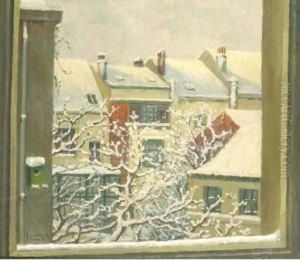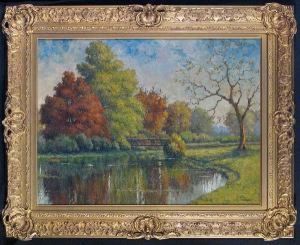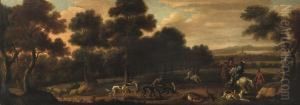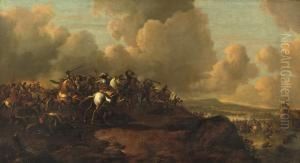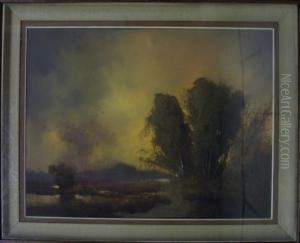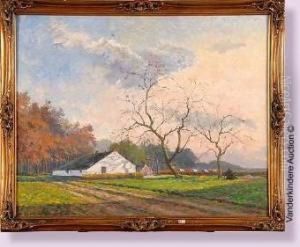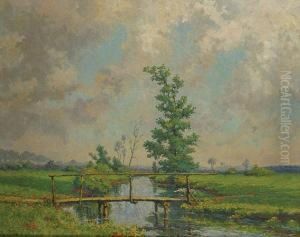Jacques Van Wijck Paintings
Jacques Van Wijck was a Belgian artist born in 1860, primarily known for his work as a painter and sculptor. While not as widely recognized as some of his contemporaries, Van Wijck developed a respectable body of work throughout his career. He received his artistic training at the Royal Academy of Fine Arts in Antwerp, which was a significant center for art and culture in Belgium, particularly during the 19th century. The academy provided him with a solid foundation in the classical arts, including drawing, painting, and sculpture, which were the mainstay of academic art training at the time.
Van Wijck's style was influenced by the academic traditions of his education, but he also showed an interest in the everyday life of the people, which was a popular subject among many artists during the latter part of the 19th century. He was known to have created genre scenes, landscapes, and portraits. Although he did not gain the same level of fame as some of the leading artists of his time, his work was appreciated for its craftsmanship and attention to detail.
Throughout his career, Jacques Van Wijck exhibited his work at various venues, including the Salon in Paris, which was the most prestigious art exhibition in the world during the 19th century. Participation in such exhibitions was crucial for artists seeking to establish their reputations and sell their work. Van Wijck's participation in these exhibitions suggests that he was an active member of the artistic community and that his work was well-regarded by his peers.
Van Wijck lived through a period of significant change in the art world, with the rise of movements such as Impressionism and post-Impressionism challenging the dominance of academic art. However, he remained committed to his style, reflecting a preference for the traditional techniques and subjects that he had mastered during his education.
Jacques Van Wijck passed away in 1939, leaving behind a legacy that, while perhaps not as celebrated as that of some of his peers, reflects the dedication and skill of an academically trained artist who captured the spirit of his time. His works continue to be of interest to collectors and art historians who study Belgian art and the broader context of European painting and sculpture during the late 19th and early 20th centuries.
